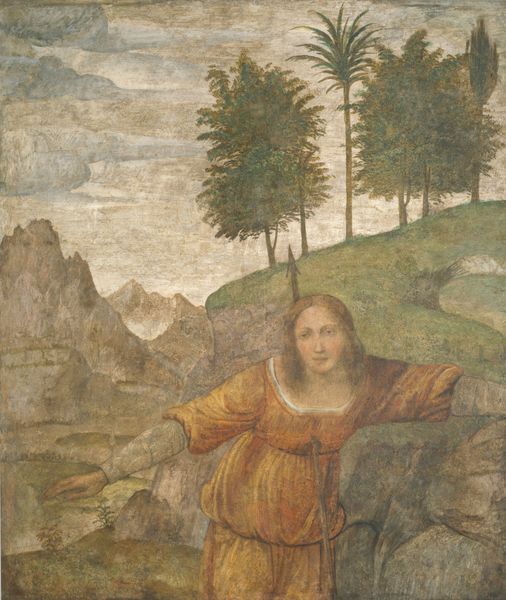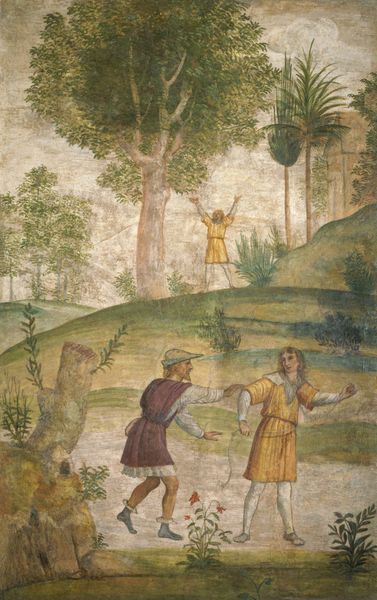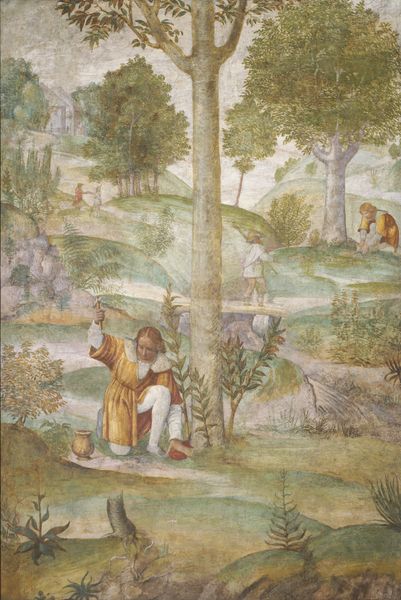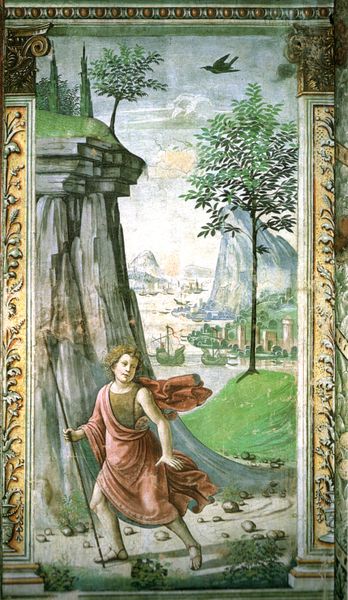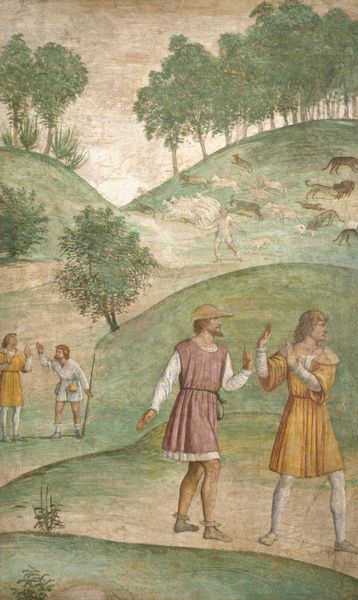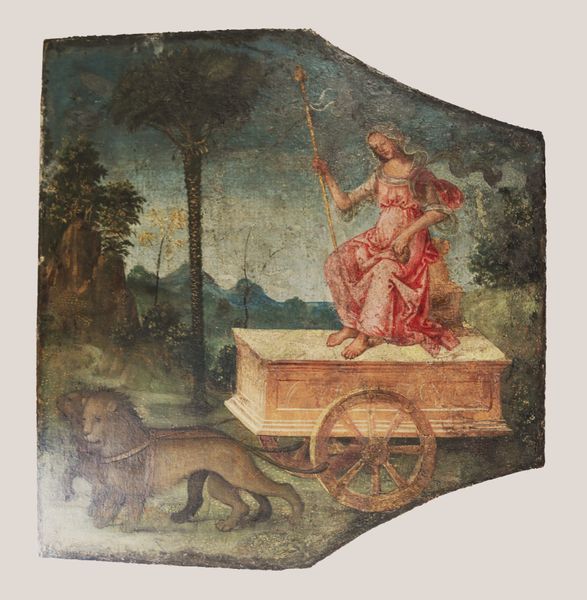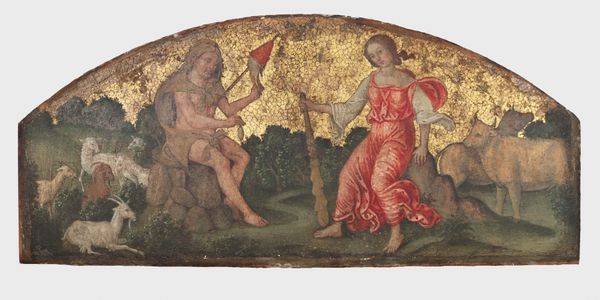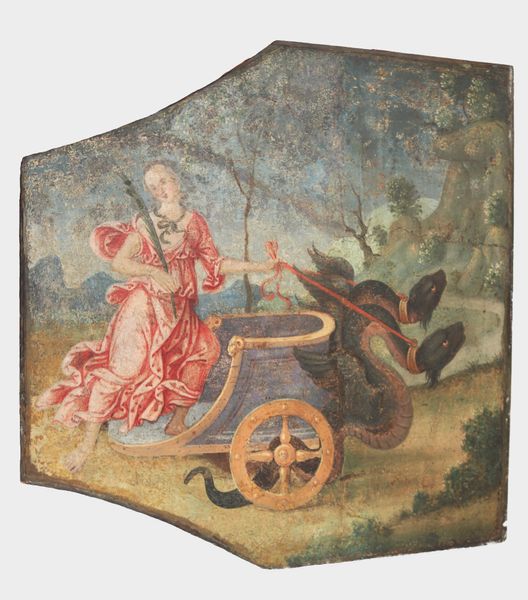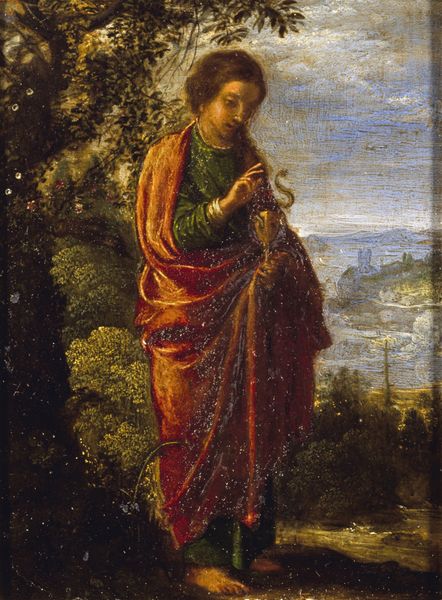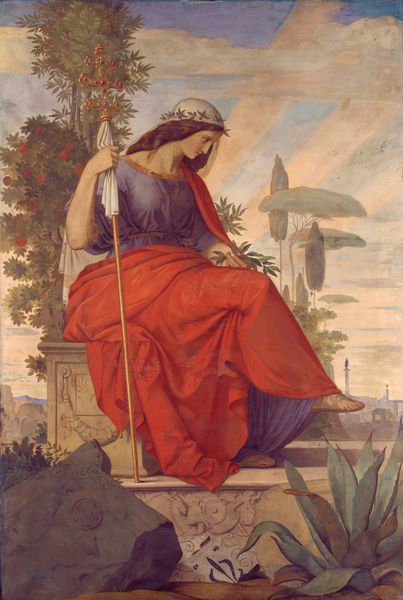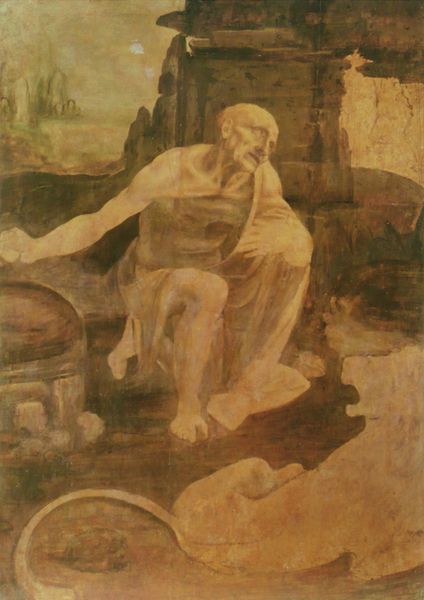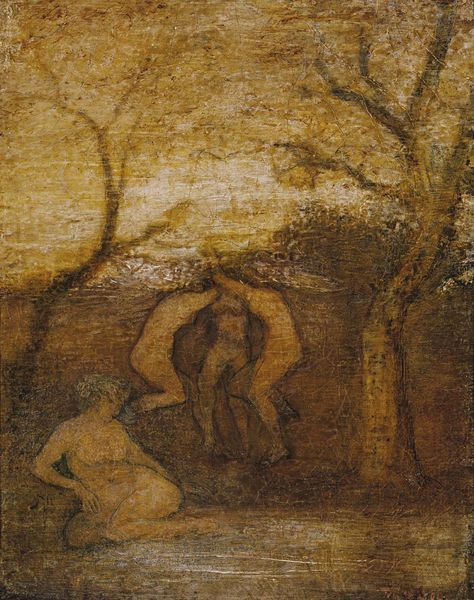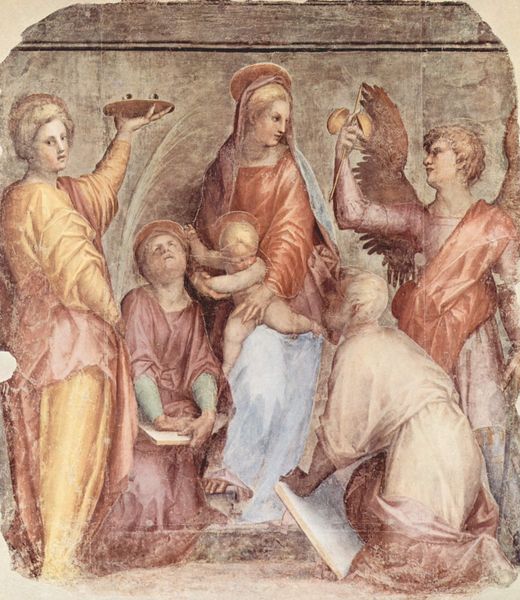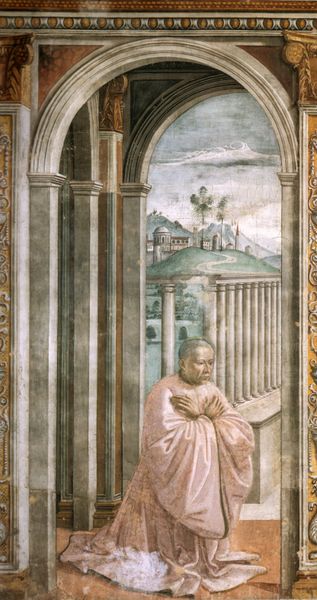
painting, oil-paint, fresco
#
portrait
#
high-renaissance
#
allegory
#
painting
#
oil-paint
#
landscape
#
figuration
#
fresco
#
oil painting
#
history-painting
#
italian-renaissance
Dimensions: overall: 228.6 x 140.3 cm (90 x 55 1/4 in.)
Copyright: National Gallery of Art: CC0 1.0
Editor: So, we're looking at Bernardino Luini's "Procris' Prayer to Diana" from the early 1520s. It appears to be oil paint, or perhaps fresco? The subdued palette gives it a serene feel, even though the figure seems to be in distress. I'm curious, what do you see in this piece, especially given its material presence? Curator: Well, initially I'm drawn to how Luini utilizes readily available pigments of the time to create the emotional tenor you picked up on. The ochres and earth tones, likely sourced locally, aren't just aesthetically pleasing but represent a material connection to the land. The fresco base—or preparation for one—tells a story of labour, of building materials and techniques handed down through generations of artisans. Editor: So, the choice of materials itself is a form of storytelling? How does that connect to the narrative? Curator: Absolutely. Consider that Procris is praying to Diana, goddess of the hunt. Are the materials Luini using mirroring the kind of reverence a person from that time would give to hunting for their daily meals? Where the ochres used mined near areas also commonly hunted in that area of the time, by the patrons of this painting perhaps? It makes me question whether these paintings were about divinity at all, or about land-rights! Editor: That's fascinating! I'd never considered how the sourcing and physical properties of the paint could inform the theme itself. Is Luini challenging the traditional divide between the artist as 'genius' and the craftsman, through that choice of using more base materials? Curator: Precisely! By emphasizing the tangible connection between the artwork, the materials used to produce art and the everyday, Luini blurs that line. It makes me think that in engaging in painting in general, that painting could have simply been a craft! No different from that of hunting, or masonry at the time. This is very subversive, in my opinion. Editor: That changes my perspective completely. I'll never look at Renaissance painting the same way. Curator: It's important to acknowledge and question every single stage of this process, no matter how ingrained in 'high art' some work appears to be. That in doing so, we will reveal an awful lot about human behavior that standard historic readings are unwilling to recognize.
Comments
No comments
Be the first to comment and join the conversation on the ultimate creative platform.
